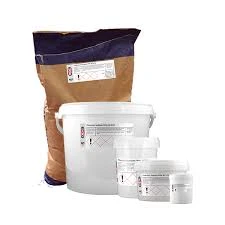
e481 food additive
Understanding E481 A Common Food Additive
In today's fast-paced world, food additives play a crucial role in ensuring the safety, taste, and longevity of our favorite products. One such additive that often appears on ingredient lists is E481, or sodium stearoyl lactylate. This compound is a food emulsifier and is primarily used in the baking industry, among others. Understanding what E481 is, its function, and safety profile can shed light on the role it plays in our food supply.
Understanding E481 A Common Food Additive
Beyond baking, E481 is also utilized in various processed foods, including margarine, sauces, and dairy products. Its role extends beyond just emulsification; it can also improve shelf life by preventing the separation of ingredients and maintaining the quality of food products over time. The inclusion of E481 in formulated food products helps manufacturers produce consistently high-quality items that meet consumer expectations.
e481 food additive

One of the most critical aspects of food additives, including E481, is their safety for consumption. Regulatory agencies, such as the European Food Safety Authority (EFSA) and the U.S. Food and Drug Administration (FDA), evaluate food additives for safety before they are approved for widespread use. E481 has been extensively studied and is regarded as safe when consumed within established limits. These agencies set acceptable daily intake levels, ensuring that consumers are protected from potential adverse effects.
Despite its safety profile, some individuals express concerns about food additives in general due to the potential for allergic reactions or sensitivities. Allergies to E481 specifically are rare, but anyone who has known allergies to stearic acid or lactic acid should exercise caution. It is always advisable for consumers to read labels carefully, especially those with dietary restrictions or specific health concerns.
The use of E481 and other food additives serves a purpose beyond mere convenience. They help maintain the integrity of food products, provide consistency in taste and texture, and extend shelf life. However, as consumers become more informed about food production, transparency in labeling is becoming increasingly important. Many individuals now prefer products that are free from additives, leading to a rise in the popularity of “clean label” foods.
In conclusion, E481 (sodium stearoyl lactylate) is an essential food additive that enhances the quality and stability of various baked goods and processed foods. While it plays a vital role in the food industry, understanding its function and safety can empower consumers to make informed choices about the products they consume. As the conversation around food additives continues, individuals can appreciate the contributions of ingredients like E481 while also advocating for transparency and healthier options in their diets. With this knowledge, consumers can navigate the complexities of food labels and enjoy their favorite foods with a better understanding of what they contain.
-
Pure Sodium Dichloroisocyanurate Dihydrate | Powerful DisinfectantNewsAug.29,2025
-
Industrial Chemicals: Quality & Purity for Every IndustryNewsAug.28,2025
-
Nitrile Rubber Honoring Strict Production StandardsNewsAug.22,2025
-
Aspartame Ingredients Honoring Food Safety ValuesNewsAug.22,2025
-
Fertilizer for Balanced Plant NutritionNewsAug.22,2025
-
Cyanide Gold Processing with High Purity AdditivesNewsAug.22,2025
-
Formic Acid in Textile Dyeing ApplicationsNewsAug.22,2025
Hebei Tenger Chemical Technology Co., Ltd. focuses on the chemical industry and is committed to the export service of chemical raw materials.
-

view more DiethanolisopropanolamineIn the ever-growing field of chemical solutions, diethanolisopropanolamine (DEIPA) stands out as a versatile and important compound. Due to its unique chemical structure and properties, DEIPA is of interest to various industries including construction, personal care, and agriculture. -

view more TriisopropanolamineTriisopropanolamine (TIPA) alkanol amine substance, is a kind of alcohol amine compound with amino and alcohol hydroxyl, and because of its molecules contains both amino and hydroxyl. -

view more Tetramethyl Thiuram DisulfideTetramethyl thiuram disulfide, also known as TMTD, is a white to light-yellow powder with a distinct sulfur-like odor. It is soluble in organic solvents such as benzene, acetone, and ethyl acetate, making it highly versatile for use in different formulations. TMTD is known for its excellent vulcanization acceleration properties, which makes it a key ingredient in the production of rubber products. Additionally, it acts as an effective fungicide and bactericide, making it valuable in agricultural applications. Its high purity and stability ensure consistent performance, making it a preferred choice for manufacturers across various industries.





